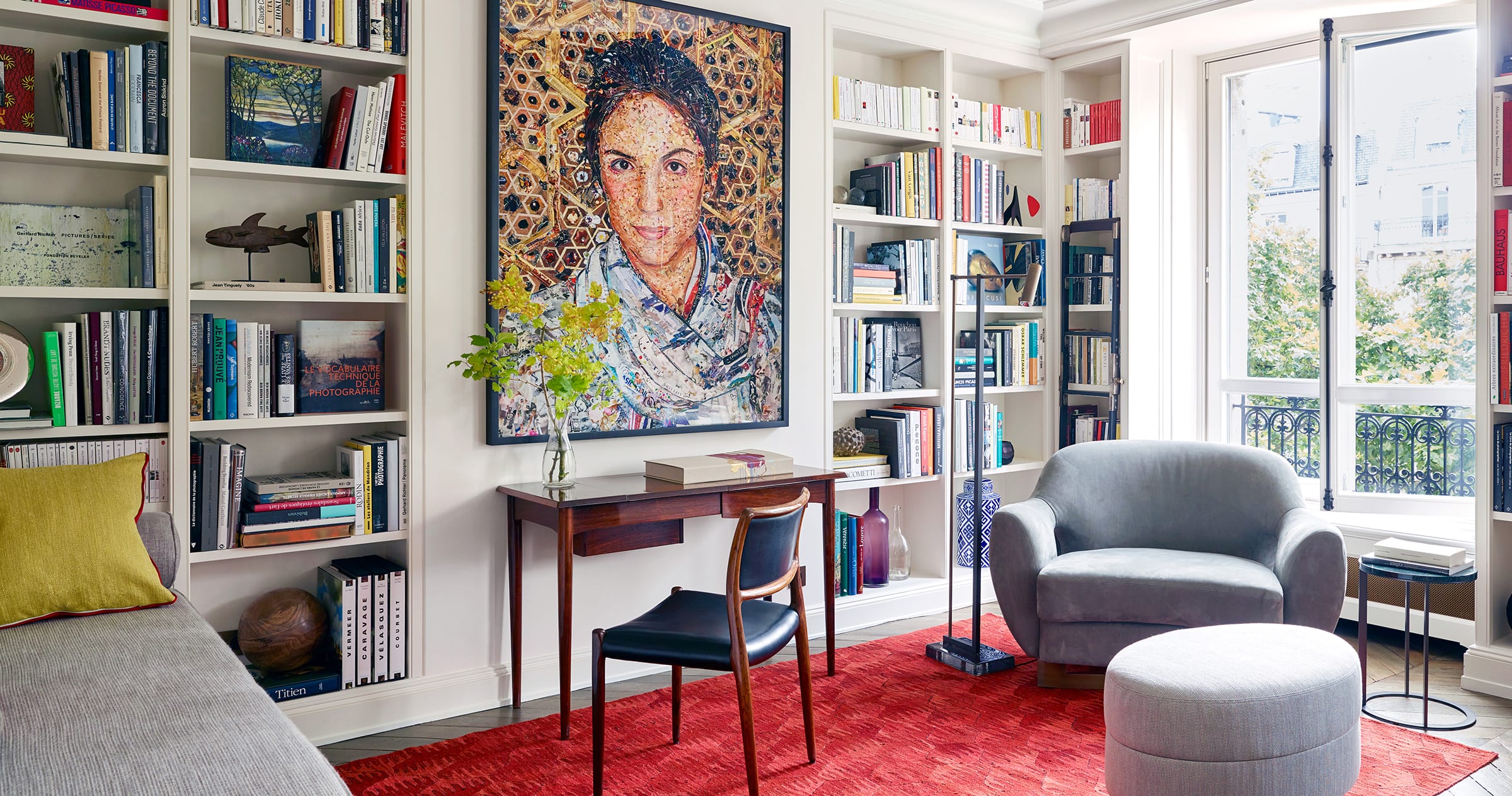Tour Artist Vik Muniz’s Chic Paris Apartment
BW Architects helped transform the 19th-century space into a modern pied-à-terre

Brazilian-born artist Vik Muniz first fell hard for Paris in the early 1990s, when he spent about a year and a half there preparing several European exhibitions. The city’s history, its wealth of museums, and its 10 P.M. summertime sunsets all worked their magic on him. He also lived with a Frenchwoman for seven years, during which he made regular jaunts to the City of Light. The human romance didn’t last, but, he says, “I maintained a relationship with the place. I loved the city very well.”
Then, about three years ago, another woman in his life—his mother-in-law—found an apartment for sale on a broad, leafy avenue in the Left Bank’s elegant 7th arrondissement, a perennial domain of the Parisian elite. Longing for a European base, Muniz and his wife, Malu Barreto, decided to pounce.

With the help of his longtime collaborators Basil Walter and Brenda Bello of BWArchitects, the couple transformed the apartment into a modern pied-à-terre, while preserving the 19th-century mood with herringbone wood floors, a marble mantelpiece, and ample moldings. “I am a 19th-century spirit,” he declares, noting that photography, his primary medium, was invented in that epoch. “I can throw a rock on Napoleon’s tomb—Les Invalides is just next door to me. In Paris you want to continue being in Paris when you turn the key to your apartment. Brenda and Basil figured that out early on.”
Muniz, Barreto, and their children—his, hers, and theirs—live mostly in two places: a large house beside a forest in Rio de Janeiro and a live/work space in Brooklyn. “I’ve lived 34 years in New York. I’m a loft dweller,” he says. “I like open spaces. My family, we don’t really care so much about privacy.” In fact, his five-year-old daughter’s favorite thing about the Brooklyn loft, he says, is “everybody’s together all the time.”

Bringing some of that communal spirit to Paris wasn’t easy. “The apartment was very compartmentalized but had beautiful original details and amazing light,” says Bello, who designed both the New York loft and Escola Vidigal, an art school Muniz founded for the children of a Rio favela, in addition to consulting on Muniz’s acclaimed mosaic portraits of disarmingly diverse New Yorkers for the new Second Avenue subway’s East 72nd Street station.

In his Rio house, Muniz says, the bedrooms are big—and usually empty. So in Paris the team—Muniz describes himself as a very active client—reconfigured the layout to allow for only two small bedrooms, hoarding square footage for shared spaces. The children’s room, though quite narrow, sleeps four, with two daybeds running along one wall, each stowing a trundle bed beneath it. “The kids love to sleep together,” Muniz says with a laugh. “It’s a little bit like camping.” The master bedroom, meanwhile, tucked away in back, where the kitchen used to be, holds little more than a bed.
Muniz and Barreto undertook much of the decorating themselves. The celebrated artist Claude Lalanne, a friend, designed a mirror with a vinelike frame and candelabra for their mantel, and Muniz found a chic pair of 1960s jacaranda-wood chairs at a flea market, one of his favorite weekend haunts. “We wanted an old, heavy kitchen farm table, so it would look like it’s been there forever,” he says. To balance it, they chose lightweight Eames chairs in a smorgasbord of colors, echoed in a trio of pendant fixtures dangling above. There are other whimsical touches, like wallpaper in the children’s room and master bath that features an encyclopedia’s worth of animals, insects, and botanicals and that Barreto and Bello discovered in Paris’s famed Deyrolle taxidermy shop.

As for the art, Muniz, perhaps best known for his beguiling photographic portraits rendered in ephemeral materials such as sugar or chocolate syrup, has installed only two of his own works: a collage of thousands of itsy-bitsy magazine images that together make up a hunk of meat, appropriately hanging by the dining table; and a portrait of Barreto, though, her husband laments, she fears that displaying it so prominently may be pretentious. Otherwise, the art is predominantly 20th-century European, including drawings by Joan Miró and Jean Tinguely, and French highlights from Muniz’s extensive photography collection, with names like Cartier-Bresson, Kertész, and Brancusi. “Photography’s like any other drug,” he says. “You start making it, then you become addicted to it.”

Muniz and Barreto are still tinkering. He wants to find a spot for his narwhal tooth; create a mash-up of 16th-, 17th-, and 18th-century prints and contemporary drawings in the kitchen; and buy some antique optical toys or maybe a fossil. “As we live longer in the apartment, I want it to get a cabinet-of-curiosities feel, to fill it with experiences, to impregnate it with stuff, everywhere you look,” Muniz says, then breaks into a smile. “It will be a little bit more crowded.”